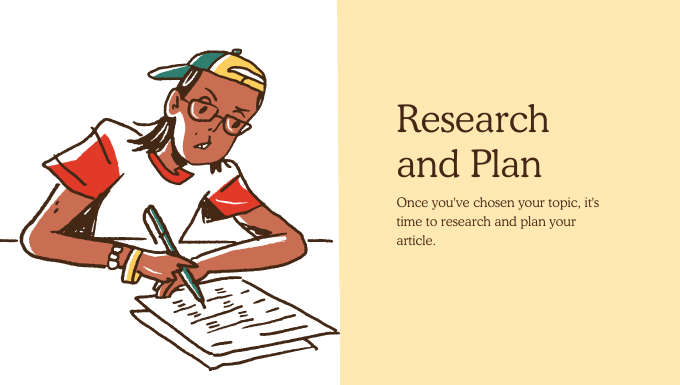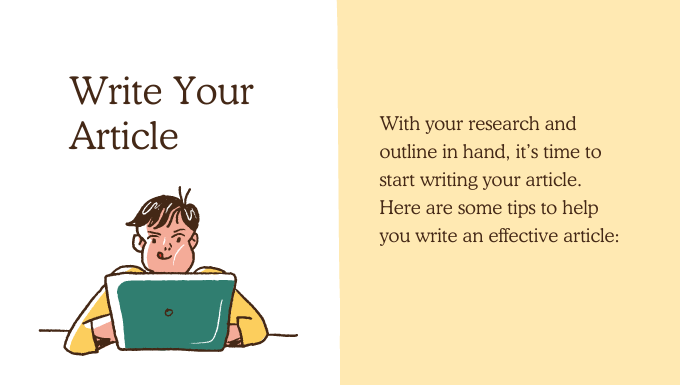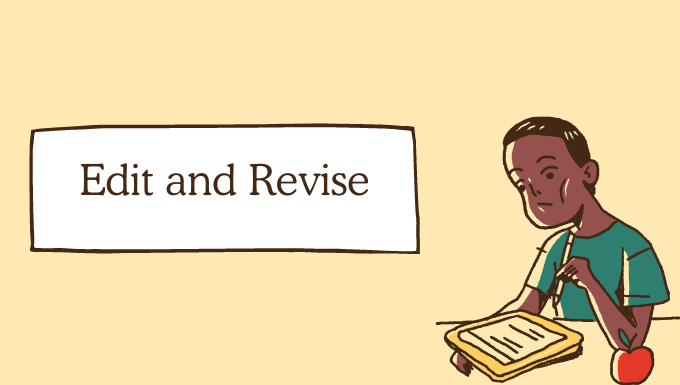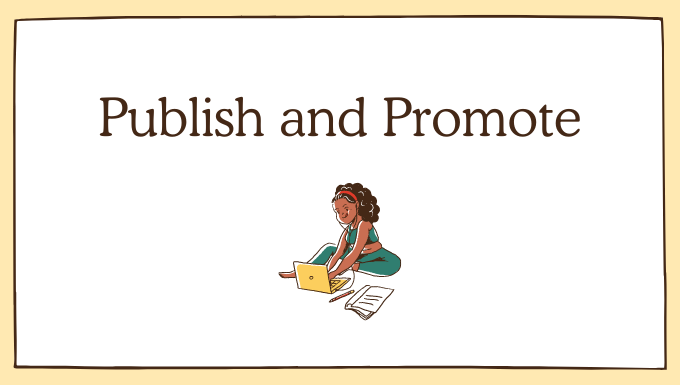
Table of Contents
How to Write an Article?
Writing an article can be a daunting task, especially if you’re new to writing or haven’t written in a while. But with a clear guide, you can learn how to write an effective article that engages your readers and conveys your message. Whether you’re writing for a blog, magazine, or academic journal, the process of writing an article is similar. In this step-by-step guide, we’ll take you through the process of writing an article, from choosing a topic to publishing and promoting your work.
Step 1: Choose a Topic
The first step in writing an article is to choose a topic. This may seem obvious, but it’s crucial to select a topic that resonates with your target audience and is relevant to your expertise or industry. Here are some tips to help you choose a topic:
Brainstorm ideas based on your interests and expertise
When brainstorming ideas, consider your passions, areas of expertise, and experiences. Ask yourself:
- What am I knowledgeable about?
- What do I enjoy talking about?
- What problems do I want to solve?
- What topics do I want to explore?
This will help you generate ideas that are authentic, engaging, and valuable to your audience.
Identify your target audience and their needs
Understanding your target audience is crucial to writing a relevant and effective article. Consider:
- Who are they?
- What are their pain points?
- What are their interests?
- What are their goals?
- What problems do they need solved?
By understanding your audience’s needs, you can tailor your topic and content to meet their needs and engage them effectively.
Research popular topics in your industry
Stay up-to-date on industry trends by researching popular topics. Use online tools like Google Trends, Trend Hunter, or Exploding Topics to identify trending topics and keywords. Read industry blogs and publications, engage with your audience on social media, and analyze your competitors’ content to generate relevant and timely article ideas.
Select a specific and relevant topic that aligns with your goals
Your topic should be specific enough to be covered adequately in your article, and relevant to your audience’s needs and interests. Consider:
- What specific aspect of your expertise or interest do you want to explore?
- How does this topic align with your goals and purpose?
- Will this topic resonate with your target audience?
By selecting a specific and relevant topic, you can create content that is focused, valuable, and engaging.
Make sure your topic is not too broad or too narrow
A topic that is too broad may be difficult to cover adequately in a single article, while a topic that is too narrow may not be of interest to a wide enough audience. Consider:
- Can this topic be covered comprehensively in a single article?
- Is this topic too specialized or niche?
- Will this topic appeal to a wide enough audience?
By finding a balance between breadth and depth, you can create content that is comprehensive, yet focused.
Consider the length of your article and the time you have to write it
Your topic should be manageable within the word count and time frame you have to write. Consider:
- How much time do I have to research and write this article?
- How many words do I have to work with?
- Can I adequately cover this topic within these constraints?
By considering the length and time constraints, you can select a topic that is realistic and achievable, and create content that is well-researched and well-written.
Step 2: Research and Plan

Once you’ve chosen your topic, it’s time to research and plan your article. This step is crucial in ensuring that your article is informative, engaging, and well-structured. Here are some tips to help you research and plan:
Conduct thorough research using credible sources
Before starting to write your article, it’s essential to conduct thorough research using credible sources. This involves finding and reading relevant books, academic journals, and reputable websites to gather accurate and reliable information. Evaluate your sources for credibility, bias, and relevance to ensure that your article is built on a solid foundation of knowledge.
Organize your research findings using notes or an outline
As you conduct your research, organize your findings using notes or an outline. This helps you to categorize and connect ideas, identify patterns and themes, and develop a clear structure for your article. Use a note-taking system or tool that works for you, and consider creating an outline to visualize the flow of your article.
Create a clear and concise outline to structure your article
A clear and concise outline is essential for structuring your article and ensuring that it flows logically. Use your research findings to identify key points and supporting evidence, and organize these into introduction, body, and conclusion sections. Use headings, subheadings, and bullet points to clarify the outline and make it easy to follow.
Identify key points and supporting evidence
As you create your outline, identify the key points you want to make and the supporting evidence you’ll use to develop your arguments. Use credible sources to support your claims, and consider using quotes, statistics, or expert opinions to add depth and credibility to your article.
Consider the tone and voice of your article
Consider the tone and voice of your article. Will it be formal or informal, friendly or professional? Who is your target audience, and how will you engage with them? Use language and tone that resonate with your audience, and consider using anecdotes, examples, or humor to make your article more relatable and engaging.
Develop a thesis statement to guide your writing
A thesis statement is a concise summary of your article’s main argument or claim. It guides your writing, ensuring a logical flow and focus. A good thesis statement is specific, arguable, relevant, and original, providing a clear direction for your article. By crafting a strong thesis statement, you’ll write a persuasive and engaging article that presents a compelling argument and resonates with your readers.
By expanding on these points, you can ensure a thorough and well-structured approach to researching and outlining your article.
Step 3: Write Your Article

With your research and outline in hand, it’s time to start writing your article. Here are some tips to help you write an effective article:
Write a engaging headline and introduction
Your headline and introduction are the first things your readers will see, so make them count! Craft a headline that’s attention-grabbing and informative, and write an introduction that draws your readers in. Use clear and concise language to pique their interest and make them want to read more.
Use clear and concise language
Good writing is clear and concise. Avoid using jargon or overly technical terms that might confuse your readers. Instead, use simple and straightforward language to get your point across. Break up long sentences and paragraphs into shorter ones to make your text more readable.
Break up long paragraphs into shorter ones
Break up long paragraphs into shorter ones to improve readability and flow. Aim for 3-5 sentences per paragraph. This will help your readers stay focused and avoid feeling overwhelmed by a wall of text. Use clear transitions and concise language to connect your ideas and make your writing more engaging.
Use proper grammar and punctuation
Proper grammar and punctuation are essential for good writing. Make sure to proofread your text carefully to catch any errors. Use commas and semicolons to separate clauses and ideas, and use apostrophes to show possession and contractions.
Use active voice instead of passive voice
Active voice makes your writing more engaging and easier to read. It can also help you avoid awkward sentence structures and ambiguous meaning. Instead of saying “the ball was thrown by John,” say “John threw the ball.”
Use transitional phrases to connect your ideas
Transitional phrases help your text flow smoothly from one idea to the next. Use phrases like “however,” “in addition,” and “meanwhile” to connect your paragraphs and ideas. This will help your readers follow your argument and stay engaged.
Use examples and anecdotes to illustrate your points
Examples and anecdotes make your writing more relatable and engaging. Use them to illustrate your points and make your text more interesting. Instead of just stating a fact, use an example to show how it applies in real life. This will help your readers remember your points and stay invested in your argument.
By expanding on these points, you can create a well-crafted and engaging article that effectively communicates your ideas and resonates with your readers.
Step 4: Edit and Revise

Once you’ve written your article, it’s time to edit and revise. This step is crucial in ensuring that your article is error-free, clear, and concise. Here are some tips to help you edit and revise:
Take a break before editing to clear your mind
It’s essential to step away from your article for a while before editing. This allows you to clear your mind and approach your work with fresh eyes. When you’re too close to your writing, it’s easy to miss errors or overlook areas for improvement. Taking a break helps you distance yourself and come back to your article with a new perspective.
Read your article aloud to identify errors
Reading your article aloud is a simple yet effective way to identify errors and awkward phrasing. When you hear your words, you’re more likely to notice clumsy sentences, unclear ideas, and other issues that might have gone unnoticed during the writing process. This technique helps you refine your writing and ensure it sounds natural and engaging.
Get feedback from others to improve clarity and readability
Seeking feedback from others is crucial to improving your article’s clarity and readability. Ask colleagues, friends, or mentors to review your work and provide constructive criticism. Be open to their suggestions and use them to revise and improve your article. Feedback can help you identify areas that need more explanation, simplify complex ideas, and enhance overall flow
Revise and proofread your article carefully
Revision and proofreading are critical steps in the writing process. Take the time to review your article carefully, making sure to address any errors, inconsistencies, or areas for improvement. Check for grammar, punctuation, and spelling errors, and ensure that your article flows logically and is easy to follow.
Check for grammar, punctuation, and spelling errors
Grammar, punctuation, and spelling errors can undermine the credibility of your article and distract readers from your message. Make sure to check your work carefully for any mistakes, using tools like grammar checkers or style guides to help identify errors.
Make sure your article flows logically and is easy to follow
A well-structured article is essential for effective communication. Ensure that your ideas flow logically, using transitional phrases and clear headings to guide readers through your content. Use concise paragraphs and clear language to make your article easy to follow and understand.
Step 5: Publish and Promote

Finally, it’s time to publish and promote your article. Here are some tips to help you get your article out there:
Choose a publishing platform that aligns with your goals
Select a publishing platform that aligns with your goals and target audience. Consider factors like reach, engagement, and audience demographics when choosing a platform. Whether it’s a personal blog, Medium, or a industry-specific publication, make sure the platform aligns with your objectives.
Optimize your article for search engines using keywords and meta descriptions
Optimize your article for search engines by incorporating relevant keywords and meta descriptions. This will improve your article’s visibility and search engine ranking, making it more discoverable by your target audience. Use keywords strategically and write a compelling meta description to entice readers.
Share your article on social media and other channels
Share your article on social media platforms, LinkedIn, and other relevant channels to increase its reach and engagement. Use eye-catching headlines, images, and summaries to entice readers and drive traffic to your article.
Engage with your readers by responding to comments and creating a discussion
Encourage discussion and engagement by responding to comments and creating a dialogue with your readers. This helps build a community around your article and fosters a sense of connection with your audience.
Consider submitting your article to other publications or websites
Consider submitting your article to other publications or websites to expand its reach and impact. Research relevant platforms and follow their submission guidelines to increase your chances of publication.
Keep track of your analytics to see how your article is performing
Monitor your article’s performance using analytics tools like page views, engagement metrics, and social media insights. This helps you understand your audience’s behavior and adjust your strategy to optimize your article’s impact.
By following these steps, you can effectively publish and promote your article to achieve your goals and reach a wider audience.
Conclusion
Writing an article takes time and effort, but with a clear guide, you can learn how to write an effective article that engages your readers and conveys your message. Remember to choose a topic that resonates with your audience, research and plan carefully, write clearly and concisely, edit and revise thoroughly, and publish and promote your work. Happy writing!
Additionally, here are some final tips to keep in mind:
- Write regularly to improve your writing skills
- Read widely to stay up-to-date on industry trends and best practices
- Experiment with different formats and styles to find what works best for you
- Don’t be afraid to ask for help or seek out resources when needed
- Keep learning and growing as a writer to produce high-quality content.